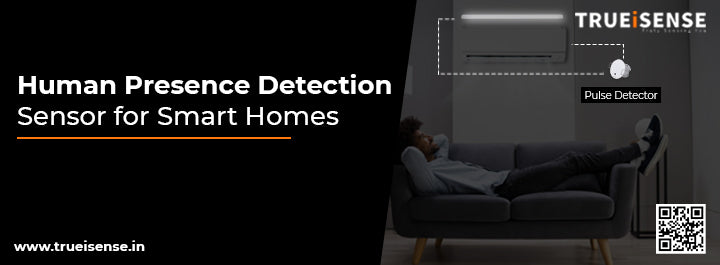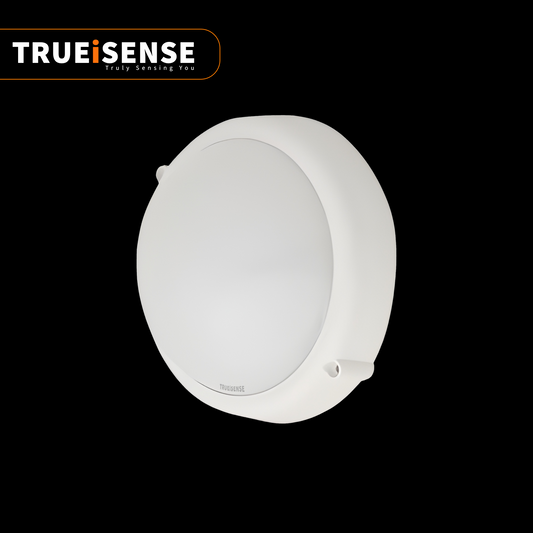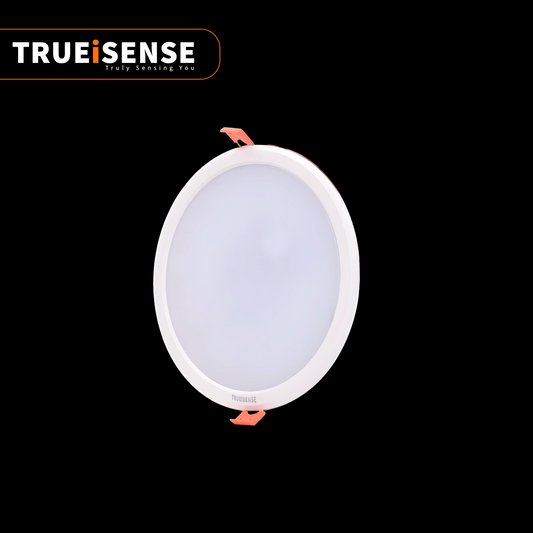
Human Presence Detection Sensor for Smart Homes
Introduction
Smart homes are becoming increasingly popular, offering automation, convenience, and energy efficiency. One of the most critical aspects of smart home automation is human presence detection, which allows devices to respond intelligently based on occupancy. Traditional motion sensors have limitations, such as failing to detect stationary individuals. However, advanced 24GHz FMCW (Frequency Modulated Continuous Wave) radar sensors provide a more accurate and reliable solution.
In this blog, we’ll explore how human presence detection sensors work, their applications in smart homes, and why 24GHz FMCW sensors are a superior choice compared to traditional alternatives.
What is a Human Presence Detection Sensor?
A human presence detection sensor is a smart device designed to detect the presence of individuals in a room, regardless of movement. Unlike motion sensors, which only respond to changes in movement, these sensors can identify the presence of a stationary person, making them ideal for applications like energy management, security, and smart automation.
Key Differences: Presence Detection vs. Motion Sensors
|
Feature |
Presence Detection Sensor |
Motion Sensor (PIR) |
|
Detects stationary humans? |
✅ Yes |
❌ No |
|
Works in low-light conditions? |
✅ Yes |
❌ No |
|
Can penetrate through materials? |
✅ Yes |
❌ No |
|
Accuracy |
⭐⭐⭐⭐⭐ |
⭐⭐⭐ |
Human presence detection sensors enhance smart home automation by providing more precise occupancy data, leading to improved energy savings and user experience.
How 24GHz FMCW Radar Sensors Work
Understanding FMCW Radar Technology
FMCW (Frequency Modulated Continuous Wave) radar is an advanced technology that uses radio waves to detect the presence and movement of objects. These sensors emit a continuous frequency-modulated signal and measure the time delay of the reflected signal to determine distance and presence.
Why 24GHz Sensors?
- High Sensitivity – Detects both motion and stationary objects.
- Penetrates Through Materials – Works even if obstructed by furniture or thin walls.
- Low Power Consumption – Ideal for battery-powered smart home devices.
- Greater Accuracy – Reduces false positives compared to infrared (PIR) sensors.
With 24GHz FMCW radar technology, smart homes can precisely detect human presence and improve automation efficiency.
Applications of Human Presence Detection Sensors in Smart Homes
1. Smart Lighting Automation
Presence sensors can automatically turn lights on and off based on occupancy, reducing energy waste and enhancing convenience.
2. HVAC Energy Optimization
Heating, ventilation, and air conditioning (HVAC) systems can adjust temperature settings based on room occupancy, improving energy efficiency and reducing costs.
3. Enhanced Home Security & Surveillance
These sensors can detect intrusions even when individuals remain still, improving smart home security systems.
4. Elderly Care & Health Monitoring
For senior citizens or people with disabilities, presence sensors can monitor movement patterns and trigger alerts in case of inactivity or falls.
5. Automated Home Entertainment
Smart TVs, speakers, and other entertainment devices can turn on/off automatically based on whether someone is in the room.
Advantages of 24GHz FMCW Sensors Over Traditional Sensors
|
Feature |
24GHz FMCW Radar Sensor |
Traditional PIR Sensor |
|
Detects stationary humans |
✅ Yes |
❌ No |
|
Works through furniture/walls |
✅ Yes |
❌ No |
|
Low power consumption |
✅ Yes |
❌ No |
|
Privacy protection |
✅ No cameras required |
❌ Often requires cameras |
These advantages make 24GHz FMCW sensors a top choice for privacy-conscious and energy-efficient smart homes.
These advantages make 24ghz sensors ideal for smart homes where precision and reliability are paramount.
|
Feature |
24Ghz mm-wave Sensor |
5.8Ghz Sensor |
PIR Sensor |
|
Detection Range |
Ideal for close range (2m-4m) |
Better for long range (10m-12m) |
Sensitivity decreases when temperature rise close to human body |
|
Accuracy |
Detected micro-movements (breathing, heartbeat, sitting, sleeping) |
Detects larger movements |
Requires significant motion |
|
Environmental Adaptability |
Unaffected by temperature, lighting, or airflow changes |
Moderate interference resistance |
Affected by heat |
|
Penetration Ability |
Detects presence through thin walls, glass, and plastic |
Strong penetration through walls (sometimes excessive) |
Cannot detect through obstacles |
|
Cost |
Higher due to advanced features |
moderate |
low |
|
Application |
Smart home automation, healthcare, security |
Long-range motion detection |
Basic motion sensing in indoor spaces |
Challenges and Considerations
Despite their benefits, 24GHz human presence sensors come with certain challenges:
- Higher Cost – More expensive than PIR sensors, though prices are decreasing.
- Integration Complexity – Requires proper integration with smart home platforms.
- Interference Issues – May experience interference from other wireless devices.
While these challenges exist, the benefits of accuracy, efficiency, and privacy protection make them a valuable investment for smart homes.
Future Trends in Human Presence Detection for Smart Homes
As smart homes evolve, human presence detection technology will continue to improve. Some exciting trends include:
- AI-Powered Detection – Combining AI with radar sensors for even better accuracy.
- Sensor Fusion Technology – Using multiple sensors (e.g., radar + infrared) for superior performance.
- IoT & Smart City Integration – Expanding presence detection beyond homes into workplaces and public spaces.
With these advancements, 24GHz FMCW radar sensors will play a crucial role in the future of smart home automation.
FAQ:
1. What is a human presence detection sensor?
A human presence detection sensor is a smart device that detects whether a person is in a room, even if they are stationary. It helps automate smart home functions like lighting, HVAC, security, and more.
2. How does a 24GHz FMCW radar presence sensor work?
A 24GHz FMCW (Frequency Modulated Continuous Wave) radar sensor works by emitting continuous radio waves and measuring the reflected signals. This allows it to detect both moving and stationary people with high accuracy, unlike traditional motion sensors.
3. What are the benefits of using a 24GHz presence sensor over a PIR motion sensor?
|
Feature |
24GHz FMCW Radar Sensor |
PIR Motion Sensor |
|
Detects stationary humans |
✅ Yes |
❌ No |
|
Works in the dark |
✅ Yes |
❌ No |
|
Penetrates through furniture/walls |
✅ Yes |
❌ No |
|
Reduces false alarms |
✅ Yes |
❌ No |
24GHz FMCW sensors offer better accuracy, energy efficiency, and privacy protection compared to PIR sensors.
4. Where can human presence detection sensors be used in smart homes?
These sensors are commonly used for:
-
Smart lighting automation (turning lights on/off based on occupancy)
-
HVAC control (adjusting temperature settings)
-
Home security & surveillance (detecting intrusions even when motionless)
-
Elderly care & health monitoring (monitoring movement patterns for safety)
-
Smart entertainment systems (automatically turning devices on/off)
5. Are 24GHz FMCW sensors safe to use?
Yes, 24GHz radar sensors are completely safe. They use low-power radio waves that are non-invasive and pose no health risks.
Conclusion
Human presence detection sensors are transforming smart homes by offering better automation, energy efficiency, and security. 24GHz FMCW radar sensors provide a significant upgrade over traditional PIR sensors, ensuring precise, privacy-friendly, and intelligent occupancy detection.
As technology continues to evolve, investing in advanced presence detection solutions will make smart homes more efficient, responsive, and secure.
Safety is also a key consideration and 24GHz radar sensors operate on low-power radio waves that are completely safe for home use. Their energy-efficient design allows them to integrate seamlessly into smart home ecosystems without excessive power consumption. Whether you’re looking to improve your home’s energy efficiency, automate daily tasks, or enhance security, a human presence detection sensor can significantly elevate your smart home experience.
Would you consider upgrading your smart home with 24GHz human presence detection sensors? Let us know your thoughts in the comments!



